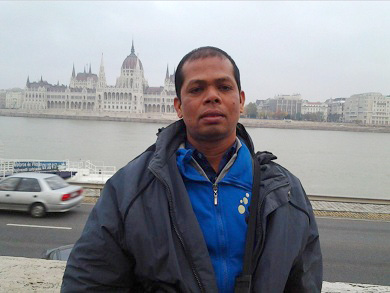Analysis of Aspects of Implementing Room Rehearsal Simulations and Disaster Emergency Handling Command Post Rehearsals at the BNPB Disaster Management Training Center
Abstract
The purpose of this study was to analyze 9 (nine) aspects of organizing table top exercise and command post exercise, namely participants; creating exercise scenarios; exercise stages; elements, roles and functions in exercise; exercise planning products; execute implementation mechanism; movement of table top exercise; movement of command post exercise and evaluation of the implementation of exercise.The study involved 6 (six) Provincial BPBDs who carried out table top exercise and commands post exercise for disaster emergency response. The approach used in this research is a qualitative method. Data collection techniques used are observation, discussion, and documentation with primary and secondary data sources. The results of the study show that 9 (nine) aspects of organizing exercise had been carried out comprehensively in accordance with the rules, methods and procedures so as to indicate that the process of disaster preparedness training through this exercise has been running well at the BNPB PB Training Center.
Keywords
Full Text:
PDFReferences
Addiarto, W., Wahyusari, S. (2018). The Effectiveness of Tabletop Disaster Exercise (TDE) as an Indoor Simulation Media to Improve Triage Ability and Referral Flow for Disaster Victims. JI-KES: Journal of Health Sciences, Volume 2, No. 1, Page 12-22.
Module-03 Book of Space Rehearsal Exercise Design. (2017). Disaster Management Training Designer Training. BNPB Disaster Management Training Center.
Module-04 Book of Command Post Rehearsal Design. (2017). Disaster Management Training Designer Training. BNPB Disaster Management Training Center.
Dausy, DJ, Buehler, JW, & Lurie, N. (2007). Designing and conducting tabletop exercises to assess public health preparedness for manmade and naturally occurring biological threats. BMC Public Health. 7:92.
Djalante, R., Garschagen, M., Thomalla, F., & Shaw, R. (2017). Disaster Risk Reduction in Indonesia: Progress, Challenges, and issues
Heumuller, E., Richter, S., Lechner, U. (2012). Towards a framework for command post exercises. ResearchGate. Conference Papers.
Hobbs, C., Lentini, L., Moran, M. (2016). The Utility of Table Top Exercises in Teaching Nuclear Security. International Journal of Nuclear Security. Vol 2. No.1, Article 8.
Indriasari, FN (2016). The Effect of Giving the Earthquake Alert Simulation Method on Children's Preparedness in Yogyakarta. Sudirman Journal of Nursing, Vol 22, No. 3.
Lloyd, A. (2017). Simulation Exercise Overview: Activities Designed To Assess, Enhance And Evaluate Preparedness. French Crisis Management Academy.
Olson, DK, Schelle, A., Larson, S., Lindeke, L., & Edwardson, S. (2010). Using Gaming Simulation to Evaluate Bioterrorism and Emergency Readiness Education. Public Health Rep., 125, 468-477.
PAHO. (2011). Guidelines For Developing Emergency Simulations And Drills.
Preparedex, (2018). 5 Key Benefits From Conducting Table Top Exercises Https://Preparedex.Com/5-Benefits-Conducting-Tabletop-Exercises? Accessed August 26, 2021.
BNPB-1 Education and Training Center. (2020). Report on the Implementation of Simulation of Mount Merapi Eruption Disaster Management during the COVID-19 Pandemic in Central Java.
BNPB-2 Education and Training Center. (2020). Report on the Implementation of Earthquake and Tsunami Disaster Management Simulations during the COVID-19 Pandemic in Nanggroe Aceh Darussalam Province.
BNPB-3 Education and Training Center. (2020). Report on the Implementation of Earthquake and Tsunami Disaster Management Simulations during the COVID-19 Pandemic in West Sumatra Province.
BNPB-4 Education and Training Center. (2020). Report on the Implementation of Simulation of Mount Merapi Eruption Disaster Management during the COVID-19 Pandemic in Yogyakarta.
BNPB-5 Education and Training Center. (2020). Report on the Implementation of Drought Disaster Management Simulations during the COVID-19 Pandemic in East Nusa Tenggara Province.
BNPB-6 Education and Training Center. (2020). Report on the Implementation of Simulation of Earthquake and Tsunami Disaster Management during the COVID-19 Period in West Papua Province.
Rahadi, R. (2020). Disaster Management Training Method. Planning Meeting of BNPB Training Center Simulation Exercise Designers.
Sanjaya, W. (2013). Learning Strategy: Standard Oriented Educational Process. Jakarta: Kencana Prenadamedia Group.
Shah, M. et al. (2020). The Development Impact of PT. Medco E & P Malaka on Economic Aspects in East Aceh Regency. Budapest International Research and Critics Institute-Journal (BIRCI-Journal). P. 276-286.
Skryabina, E., Reedy, G., Amlot, R., Jaye, R., & Riley, P. (2017). What is the value of health emergency preparedness exercises? A scoping review study. International Journal of Disaster Risk Reduction, 21, 274-283
Steward, D., & Wan, TT (2007). The Role of Simulation and Modeling in Disaster Management. J Med Syst. 3, 125–130.
Thamrin, TFR (2017). Definitions of Various Terms of Disaster Preparedness Exercise. Working Paper.
Tumbol, SS & Poli, H. (2014). Center for Disaster Management Simulation and Training: Disaster Response Design.
Ulya, I., Kusumaningrum, BR, & Rini, IS (2020). Getting Ready for Earthquake Disaster withTabletop Exercise for Disaster Management, Journal of Nursing Science: Journal of Nursing Science. Vol.8, No.1, 22-29.
WHO (2017). Simulation Exercise Manual.
DOI: https://doi.org/10.33258/birci.v5i1.4397
Article Metrics
Abstract view : 16 timesPDF - 66 times
Refbacks
- There are currently no refbacks.

This work is licensed under a Creative Commons Attribution-ShareAlike 4.0 International License.

This work is licensed under a Creative Commons Attribution-ShareAlike 4.0 International License.

_.gif)

















_.gif)



